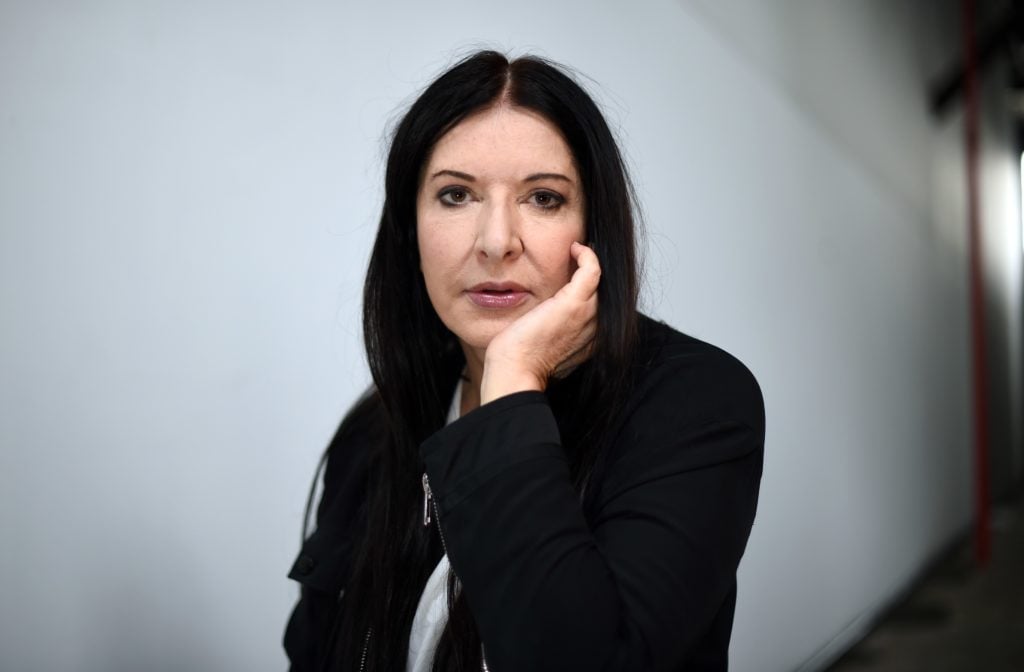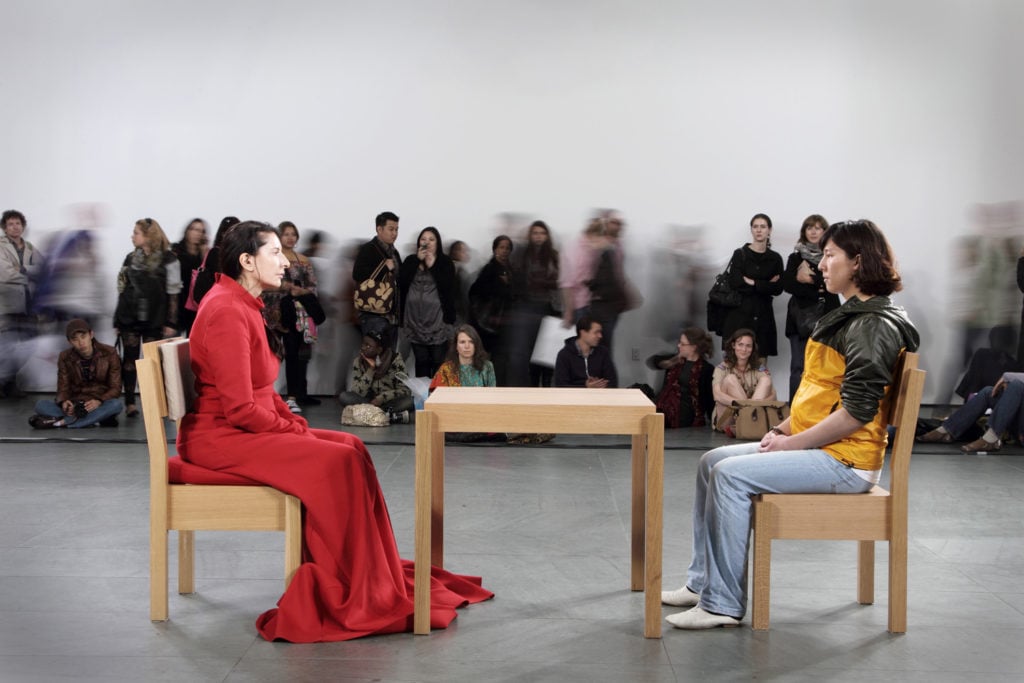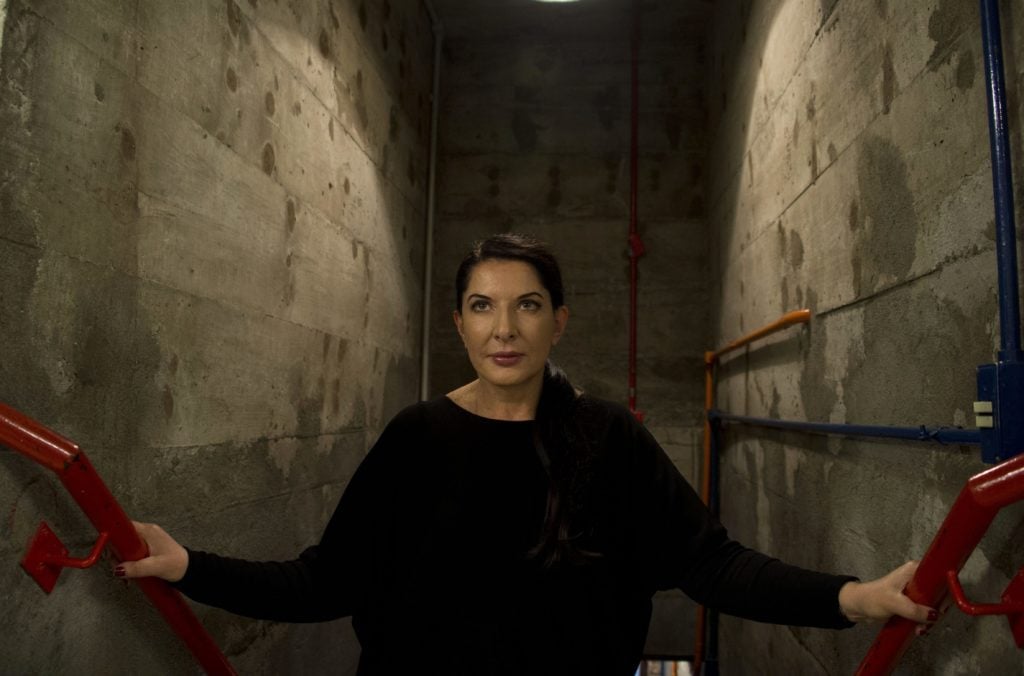People
5 Powerful Things We Learned From Marina Abramović’s Memoir
'When it comes to my work, I cast caution to the winds,' she writes.

'When it comes to my work, I cast caution to the winds,' she writes.

In the case of an artist who perpetually finds herself at the center of controversy, Marina Abramović sets the record straight in her memoir, which hits bookstores on October 25.
The book serves as a first-hand account of the performance artist’s journey of transforming herself into a living record of human resilience. “When there is turbulence on an airplane, I shake with fear,” the artist writes. “But when it comes to my work, I cast caution to the winds.”
Here are five key things we learned about the “grandmother of performance art,” who turns 70 on November 30. Her work is currently on view at FM Centre for Contemporary Art in Milan.

Marina Abramovic’s Walk Thorough Walls. Courtesy Penguin Random House.
1. She was spoiled as a child.
Abramović’s youth was marked by concerns with body image, family drama, and the many problems that come with growing up in what was then known as Yugoslavia, in the years following the Second World War. She describes Belgrade as “drab,” saying, “There is something about Communism and socialism—it’s a kind of aesthetic based on pure ugliness.”
Despite the post-war obstacles, Abramović’s parents, both of whom were war heroes in their day, created a comfortable life for the burgeoning artist. They lived in “a large, old-fashioned 1920s building, with elegant ironwork and glass, like an apartment building in Paris.” The family occupied an entire floor, which was a luxury.
Even though her parents clearly influenced the artist, her superstitious grandmother Milica left the deepest impression. “[Her] signs and rituals were kind of spirituality for me,” she admits.
2. Abramović got her start in painting…sort of.
Her father’s friend, Filo Filipovic, set a sheet of canvas aflame and called it a sunset. This was her first painting lesson. At 14 years old, she then devoted her teenage years to art.
At the Academy of Fine Arts in Belgrade, the artist would paint dreams, still lifes, and nudes until she executed a piece called Cloud With Its Shadows, in which she pinned a peanut to the wall and marveled at the shadow it cast. “As soon as I saw that little shadow,” Abramović writes, “I realized two-dimensional art truly was a thing of the past for me—that piece opened a whole different dimension.”

Marina Abramović: The Artist Is Present. Photo by Marco Anelli. © 2010 Marco Anelli. Courtesy Sean Kelly Gallery.
3. Her break from Ulay was anything but clean.
Ulay’s involvement in Abramović’s life continued well before their public reunion at the Museum of Modern Art (during Abramović’s durational performance piece The Artist is Present). Following their 12-year romantic and professional partnership, which ended after meeting halfway at the Great Wall of China, Ulay took control of their shared archive.
“He would sell our work, sometimes to people I didn’t like, sometimes at a discount that I hadn’t agreed upon, and my share of the proceeds would mysteriously never arrive,” Abramović reflects in her memoir. She says that Ulay would later ask her to buy it back in a moment of financial difficulty. All throughout, however, Abramović mentions her many attempts at reconciliation, which took form in a Christmas lunch and a birthday invitation.
4. She once had lunch with an emotional Lady Gaga.
Following her MoMA durational performance, The Artist Is Present, Abramović writes about an encounter with pop musician Lady Gaga, who sought her out with hopes of tutelage. According to the artist, Gaga told her: “I’m young, and there are three teachers I want to learn from. Bob Wilson, Jeff Koons, and you.”

Marina Abramović. Courtesy Nelson Almeida/AFP/Getty Images.
5. Abramović maintains that there are three Marinas.
“I like to think of myself as three Marinas now,” Abramović explains in the memoir’s conclusion. “There is the warrior one. The spiritual one. And there is the bullshit one.”